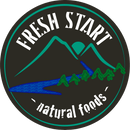What's a Plant-Based Diet?
A plant-based diet is a way of eating where the focus is on filling up your plate with plant foods.
Some examples of plant foods include:
- Vegetables
- Fruit
- Legumes (like lentils and chickpeas)
- Whole grains
- Nuts
- Seeds.
The closer these foods resemble how they’re found in nature (i.e. the less processing) and the more of them on your plate – the better for your body.
This way of eating isn’t about being restrictive. People who eat a mainly plant-based diet may still choose to eat small amounts of meat, poultry, fish, seafood and dairy (also known as semi-vegetarian, flexitarian or pescatarian). The beauty is that there is no ‘one-size fits all’ approach.
What’s the difference between a vegan and vegetarian diet?
Some people eating a plant-based diet may choose not to eat meat and animal products for various reasons. A vegan diet excludes all meat and animal products (meat, poultry, fish, seafood, dairy and eggs), whereas a vegetarian diet excludes meat, poultry, fish and seafood. However, there are a few variations of a vegetarian diet that depend on whether you eat or exclude eggs, dairy and fish (see table below).
Different styles of plant-based eating
| Name of diet | Description |
|---|---|
| Semi-vegetarian or |
includes eggs and dairy may include small amounts of meat, poultry, fish and seafood |
| Pescatarian |
includes eggs, dairy, fish and seafood excludes meat and poultry |
| Ovo-vegetarian |
includes eggs excludes meat, poultry, fish, seafood and dairy |
| Lacto-vegetarian |
includes dairy excludes meat, poultry, fish, seafood and eggs |
|
Vegetarian (a.k.a. lacto-ovo vegetarian) |
includes eggs and dairy excludes meat, poultry, fish and seafood |
|
Vegan |
excludes all meat, poultry, fish, seafood, eggs and dairy |

